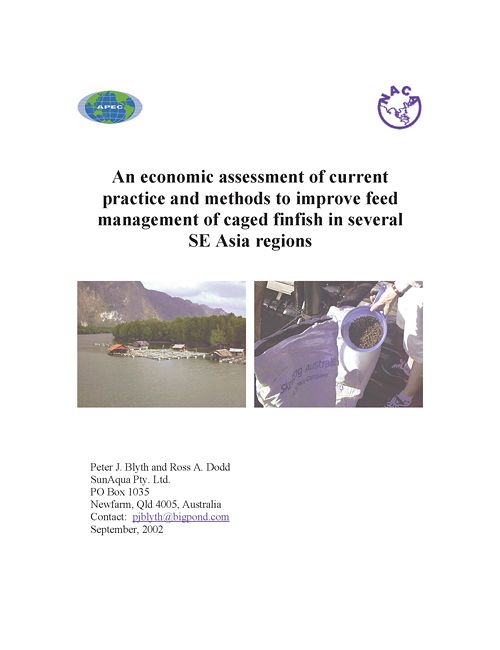An economic assessment of current practice and methods to improve feed management of caged finfish in several SE Asia regions
1 September 2002 | Peter J. Blyth and Ross A. Dodd | 928 Downloads | .pdf | 882.45 KB | Malaysia, Marine finfish, Nutrition and feeding, Thailand
Intensive sea cage aquaculture is in its infancy in SE Asia although there is still significant production of approximately 130,000 tonnes of mixed tropical species (Epinephelus sp., Lutjanus sp., Plectropomus sp., Cromileptes sp., Rachycentron sp., Lates sp., and others) carried out in small wooden systems that are fed manually. This compares to the industrial farming techniques (large cages and automation) found in Europe, America, Australia and Japan (Salmo sp., Seriola sp., Pagrus sp., Dicentrarchus sp., and Sparus sp.)
In order to grow this sector sustainably in SE Asia, the existing sea cage industry needs to under go certain reforms. These include:
- Reliable hatchery supply of disease free fingerlings from disease free broodstock.
- Trait selection programs targeted at key species for domestication.
- Modernisation of the sea grow-out systems (eg; larger more durable cage systems - steel/HDPE plastic).
- Feed management technology.
- Cessation of trash fish use for development of suitable dry pelletised diets.
- Relocation of cage systems from sub-optimal sites to locations with deeper, better quality water.
- Greater degree of government and private sector co-operation (e.g. government & private sector sea cage research facilities where long term research can occur into nutrition, feed management, disease control, broodstock control and domestification programs).
These reforms will help this sector to become a significant contributor to the regional economy in an environmentally sustainable manner.
Copyright, all rights reserved.

